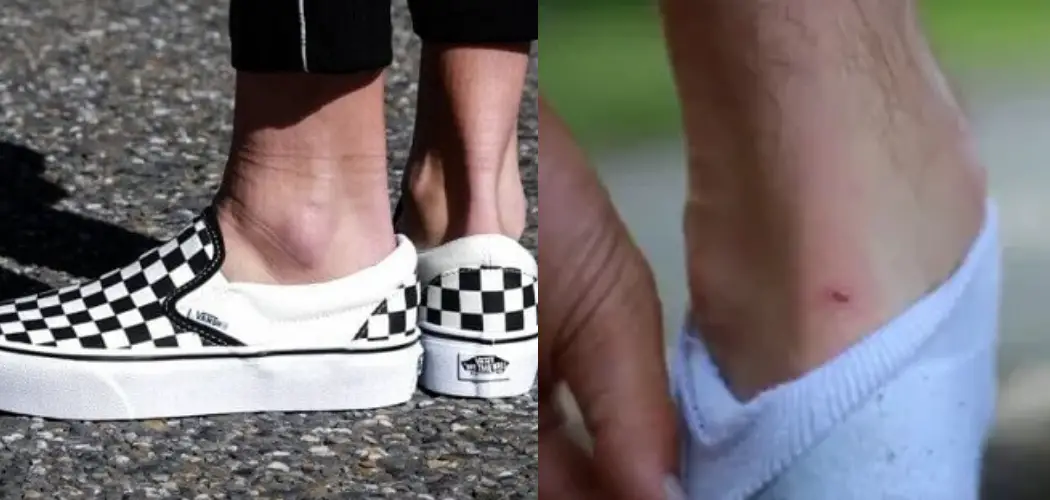Unless you’ve been living under a rock, you know that Vans are all the rage now. They’re comfortable, stylish, and perfect for those days when you don’t feel like putting any effort into your outfit. The only downside to Vans is that they can often lead to blisters on your feet. But never fear – with a bit of preparation, you can avoid getting blisters from your Vans every time. In this article, we’ll show you how to not get blisters from vans. Keep reading.
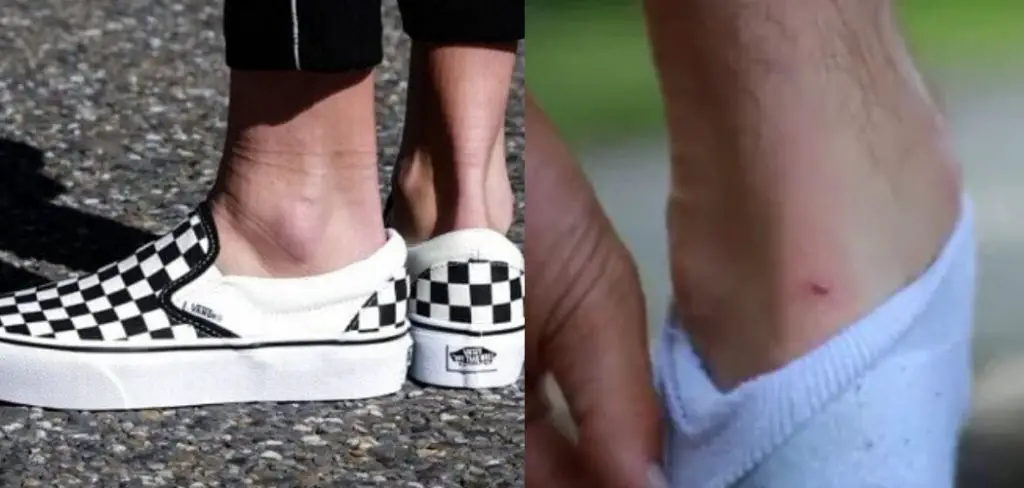
We all know the feeling – you put on a brand new pair of shoes, and within minutes, you can feel a hot spot forming on your foot. This is usually the first sign that a blister is about to form. To avoid this, it’s essential to break in your Vans before you start wearing them all day long.
Summary: To avoid getting blisters from Vans, start by wearing thicker socks and breaking in your shoes gradually. Apply petroleum jelly or blister pads on problem areas like the back of your heel or sides of your toes. If your shoes are rubbing or causing discomfort, try adjusting the laces or adding insoles for extra cushioning. Regularly cleaning and drying your shoes can also prevent bacteria buildup and reduce the chance of blisters.
Why Do You Get Heel Blisters From Vans?
There are a few reasons you might get heel blisters from wearing Vans shoes. The first is that the shoes are too big. If your shoes are too big, they’ll rub against your heel and cause friction. This can lead to blisters.
The second reason you might get blisters from Vans is that the shoes are too stiff. If the shoes are too stiff, they won’t mold to your feet and will create pressure points that can lead to blisters.
The third reason is that you’re not wearing socks. Socks help protect your feet from friction and provide cushioning. Without socks, your feet are more likely to slide around inside your shoes and create friction that can lead to blisters.
A Detailed Guide on How to Not Get Blisters From Vans
Method 1: The No-Sock Method
This is the most common method to prevent blisters when wearing vans. Wear your vans without any socks. This works for a variety of reasons. First, it allows your feet to breathe, which prevents sweat build-up. Second, it cuts down on friction by eliminating the layer of fabric between your foot and the shoe.
There are a few things to keep in mind when using this method. First, make sure your feet are clean and dry before putting on your shoes. Second, if you have particularly sweaty feet, consider using foot powder or antiperspirant spray to keep them dry throughout the day. Third, be aware that this method may not work as well in hot weather or during strenuous activity when your feet are more likely to sweat.
Method 2: The Sock Method
Wearing socks with your Vans is the best way to prevent blisters. They will provide a layer of protection between your foot and the shoe, but they will also absorb any sweat that could otherwise cause friction. The key is to choose the right type of sock.
Thin socks made from synthetic materials like polyester or nylon are ideal, as they will fit snugly without being too tight. However, avoid thick socks made from materials like cotton, as they can bunch up and cause more friction. Instead, opt for a breathable pair that will wick away moisture and keep your feet dry.
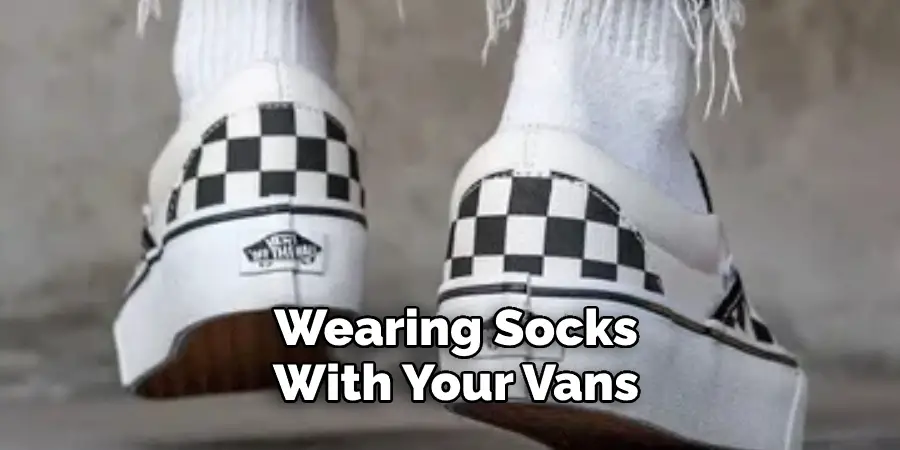
If you’re wearing your Vans for an extended period, consider bringing along a second pair of socks to change into halfway through the day. This will help keep your feet fresh and prevent blisters from forming.
Method 3: The Tape Method
If you’re looking for a more permanent solution, you can try the tape method. Take some medical tape and attach it to the areas of your feet that tend to rub against your shoes. This will create a barrier between your skin and the shoe and should help to prevent blisters from forming.
You can also similarly use moleskin or band-aids, although they may not stay in place as well as tape. If you’re using moleskin, cut it into small strips and apply it to the areas where you usually get blisters. You can then cover the moleskin with socks to keep it in place.
Band-aids are another option, but they can be trickier to apply. First, you’ll need to make sure that the band-aid is big enough to cover the entire area where you usually get blisters. Otherwise, it will likely come off and won’t do much good.
Whichever option you choose, make sure to apply it before putting your shoes on. This will give the tape or moleskin a chance to adhere correctly and create a barrier between your skin and the shoe.
Method 4: Apply Petroleum Jelly
Petroleum jelly is a lubricant, and it will help prevent blisters by reducing friction.
Apply petroleum jelly to any areas where you commonly get blisters, such as the back of your heel or around your toes. You can also put it on your socks before putting them on, which will create a barrier between your foot and the fabric.
If you start to feel a hot spot developing, stop and apply more petroleum jelly to the area. This will help to prevent the blister from forming in the first place.
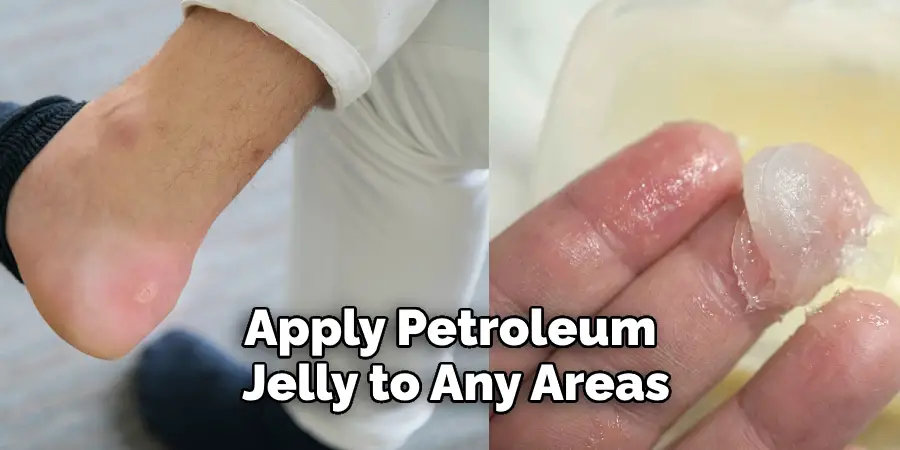
Of course, you don’t want to walk around with greasy feet, so make sure you have time to let the petroleum jelly soak in before you put your shoes on.
Method 5: Break In Your Shoes First
If you’re worried about blisters, it’s best to break in your shoes before wearing them out. This will help to stretch the fabric and make the shoes more comfortable. There are a few ways that you can do this:
- Wear Them Around the House: Put on a pair of socks and walk around your home in your shoes for an hour. This will help to stretch them out and make them more comfortable.
- Sleep in Them: If you’re worried about blisters, you can sleep in your shoes for a night. This will help to break them in quickly. Just make sure that you wear socks to bed!
- Wear Them in the Shower: Another way to break in your shoes is to wear them in the shower. This will help to soften the fabric and make them more comfortable. Just make sure that you don’t get them too wet!
After you’ve broken in your shoes, you should be able to wear them without worrying about blisters. Just make sure that you take care of them and don’t wear them for too long at a time.
Method 6: Wear Loose-Fitting Shoes
If you’re susceptible to blisters, it’s essential to wear shoes that fit well and don’t rub against your skin. That means avoiding shoes that are too tight or too loose.
Wearing loose-fitting shoes is especially important if you have wide feet or will be wearing the shoes for extended periods. Loose-fitting shoes will help prevent blisters by reducing the amount of friction between your skin and the shoe.
There are a few different ways to make sure your shoes fit correctly. First, you can try them on in a store before buying them. This way, you can ensure they’re not too tight or too loose. Second, you can purchase adjustable shoes. This way, you can adjust the fit as needed. Finally, you can buy shoes that are made to fit wide feet.
If you follow these tips, you should be able to prevent blisters from forming on your feet.
You Can Check It Out To How to Apply Saphir Shoe Cream
How Do You Break in Vans Fast?
Most people who buy Vans shoes will experience some discomfort when they first start wearing them. The shoes are designed to be worn without socks, and the seams can rub against your feet and cause blisters. The good news is that you can do a few things to break in your Vans shoes quickly and prevent blisters from forming.
1. Wear socks with your Vans shoes. This may seem counterintuitive, but wearing socks helps to protect your feet from blisters. Choose a thin pair of socks that won’t make your shoes too tight, and make sure they don’t have any seams that could rub against your skin.
2. Use a band-aid or moleskin on trouble spots. If you start to feel a hot spot developing, put a band-aid or piece of moleskin over it. This will help protect your skin and prevent the blister from getting worse.
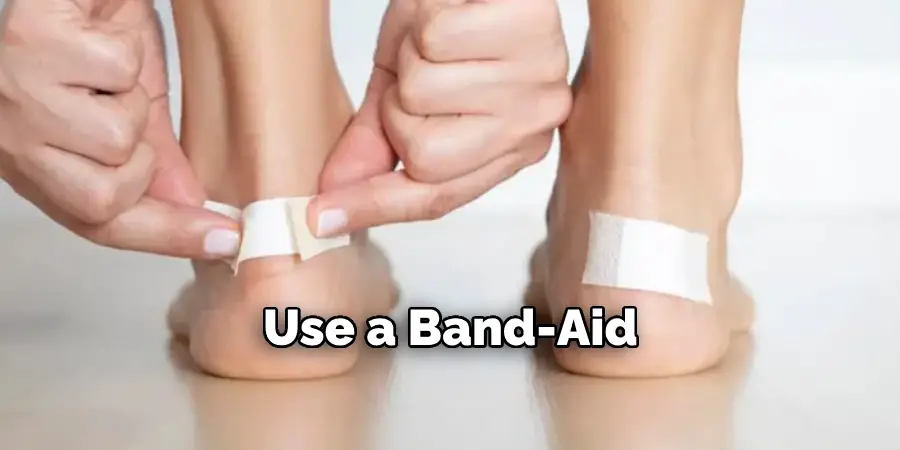
3. Put your shoes on before you go out. This may not be possible if you’re wearing them to work or school, but if you’re going out for the day, put your shoes on before you leave the house. This will allow them to adjust to your feet and stretch out a bit.
4. Walk around the house in them. Once you have your shoes on, walk around the house to get used to them. Please pay attention to how they feel and whether or not you’re developing any hot spots.
5. Wear them for short periods at first. When you first start wearing your Vans shoes, only wear them for a few hours at a time. This will give your feet a chance to adjust and will help to prevent blisters from forming.
Following these tips should help you break in your Vans shoes quickly and prevent blisters from forming. Remember to be patient – it may take a few days or even weeks for your shoes to stretch out and mold to your feet thoroughly. But once they do, you’ll be able to enjoy them without any discomfort!
You Can Check It Out To How to Bead Hey Dudes
Frequently Asked Questions
Why Are Vans Uncomfortable?
Actually, there are a few different reasons why Vans can be uncomfortable. One reason is that the shoes are often too tight and don’t provide enough space in the toe box. This can cause pain in the ball of your foot and other parts of your feet. Additionally, Vans are also known for their low-cut design which can expose your toes to extreme heat and cold.
Are Vans Supposed to Be Tight?
Not necessarily! While Vans are often associated with being tight, this is not always the case. In fact, many people prefer a looser fit to avoid feeling constricted or uncomfortable in their clothing. When purchasing shoes, it’s important to find a pair that feels comfortable and allows you an unrestricted range of motion.
What might be more relevant for some people is the style factor. For example, if you’re looking for something classic and timeless, then opting for a tighter fit may be preferable over something that offers more contemporary styling options. Ultimately, it’s up to you as the individual buyer to decide what combination of factors—style/fit/comfort—matter most when shopping for footwear.
You Can Check It Out To How to Break in Thursday Boots
How Do I Stop My Vans From Rubbing?
It can be difficult to get your vans looking their best, but there are a few steps that you can take to prevent them from rubbing. One of the most important things is to properly maintain the rubber sealant on the tires and make sure they are inflated to manufacturer specifications. Additionally, it’s important to regularly clean all of the surfaces that come in contact with your vans as grit and dust will accumulate over time. This can lead to excessive wear and tear on your seams and bumpers. Finally, use Armor All or similar products on areas where dirt tends not stick (such as around doors) for added protection against scratches.
Does It Hurt to Break in Vans?
If you’re a beginner skateboarder, the answer is yes, it definitely hurts to break in your new shoes. Skaters suffer from blisters and other forms of skin irritation at various stages of shoe breaking-in because the boards are still too stiff for their feet. Depending on the type and design of your footwear, skating can also be quite dangerous during this phase as you may fall more than usual or injure yourself further if you don’t have properly fitted shoes.
You Can Check It Out To How to Buckle Shoes
Conclusion
So there you have it, our top tips on how to not get blisters from vans. By following these simple steps, you can avoid the pain and embarrassment of having sore feet in public. Just be patient during the break-in process, and soon enough you’ll be able to wear your Vans with pride.
You Can Check It Out To How to Use No Tie Laces

